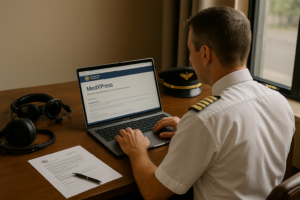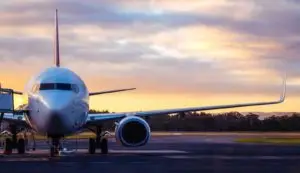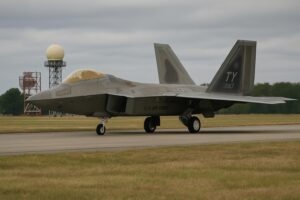On a late Friday evening in San Bernardino County, a tragic event occurred when an Airbus EC130 helicopter crashed in adverse winter weather conditions. All six passengers aboard the chartered flight were confirmed deceased at the scene.
The single-engine helicopter came down near Halloran Springs in the Mojave Desert, roughly 75 miles from Barstow, near Baker, California around 10pm, the San Bernadino County Sheriff’s Department said.
EC130 Crash Investigation into Potential Causes
Three primary areas of investigation are typically followed:
- Adverse Weather Conditions: The crash occurred during challenging weather conditions, including rain and a winter mix, which will be examined as a contributing factor.
- Technical and Mechanical Integrity: The technical aspects and mechanical condition of the Airbus EC130 will be thoroughly investigated to rule out equipment failure.
- Pilot and Operational Factors: The decision-making and actions of the pilot prior to and during the flight will be reviewed.
Investigations are methodical, using all available data to ascertain the cause and any contributory factors.
EC130 Crash Investigation Process for San Bernardino Helicopter Crash
The National Transportation Safety Board (NTSB) will spearhead a comprehensive investigation into the unfortunate helicopter crash in San Bernardino County. In these scenarios investigations adhere strictly to established protocols and procedures, aiming to uncover the precise sequence of events leading up to the incident, as well as any contributory factors.
Phase One: On-Site Investigation
- Data Collection: Investigators will collect all relevant data from the crash site, including, but not limited to, debris, the helicopter’s components, and any personal electronic devices that could contain flight data.
- Witness Statements: Statements from witnesses and any air traffic communications will be recorded and analyzed for clues regarding the helicopter’s performance and the environment it was operating in.
Phase Two: Technical Analysis
- Flight Recorder Analysis: If the helicopter was equipped with a flight data recorder, the data will be meticulously analyzed to understand the flight path, altitude, speed, and control inputs prior to the crash.
- Maintenance Review: The maintenance history of the Airbus EC130 will be scrutinized to identify any lapses or anomalies that might have contributed to the crash.
- Radar Analysis: The radar data, including any communications with Air Traffic Control will be analyzed to understand not only the flight path, altitude, and speed, but also the state of the pilot as he or she responded to ATC instructions.
Phase Three: Human Factors
- Pilot Review: The pilot’s background, including training, medical history, and recent workload, will be examined to assess their fitness and performance.
- Operational Procedures: The operational procedures of the charter company will be reviewed to ensure compliance with safety regulations and best practices.
Phase Four: Environmental and Meteorological Assessment
- Weather Analysis: Detailed meteorological data for the time of the crash will be evaluated to ascertain the role of weather in the incident.
- Terrain Assessment: The geography of the crash site will be analyzed to determine if the terrain may have influenced the crash.
Phase Five: Simulation and Reconstruction
- Flight Simulation: Simulations may be conducted using the collected flight data to replicate the final moments of the flight under similar environmental conditions.
- Crash Reconstruction: A reconstruction of the crash will be attempted to understand the dynamics of the impact and the subsequent injuries sustained by the passengers.
Phase Six: Reporting and Recommendations
- Draft Report: A draft report detailing the findings and probable cause will be prepared.
- Peer Review: Before finalization, the report will undergo rigorous internal and external peer reviews.
- Safety Recommendations: Finally, based on the findings, the NTSB will issue safety recommendations aimed at preventing similar incidents in the future.
EC130 Crash Legal Implications and Remedies
In aviation incidents, particularly those involving fatalities, the discovery of negligence can lead to a complex legal process. Here’s an elaboration on the potential legal implications and remedies that may follow such a finding:
Legal Proceedings Post-Investigation
- Criminal Charges: If the investigation reveals that the negligence rose to the level of recklessness or was intentional, criminal charges could be brought against those responsible. This could include individuals or entities whose actions or failure to act led to the crash.
- Civil Litigation: More commonly, civil lawsuits may be filed by the families of the victims. These suits would seek financial compensation for the wrongful deaths of their loved ones. Plaintiffs may include not only the estate of the deceased but also any dependents or close relatives.
Crash Negligence and Liability
- Determining Negligence: To establish negligence, it must be shown that there was a duty of care that was breached and that this breach directly caused the accident and resulting harm. This could involve pilot error, improper maintenance, or a failure in the manufacturing process of the helicopter.
- Strict Liability: In some cases, the law may impose strict liability on the manufacturers or operators of the aircraft, which means they could be held liable regardless of fault if the accident was caused by a defect in the product or the service provided.
Potential Remedies
- Compensatory Damages: These are intended to compensate the victims’ families for their loss and may include both economic damages, like loss of future earnings and non-economic damages, such as pain and suffering.
- Punitive Damages: In rare cases where the negligence is found to be willful or particularly egregious, punitive damages may be awarded to punish the wrongdoers and deter similar conduct in the future.
Settlements
- Out-of-Court Settlements: Often, parties may opt to settle the case out of court to avoid the uncertainty of a trial. Settlements are negotiated agreements where the defendant agrees to pay a certain amount of money in exchange for the plaintiffs dropping the case.
- Insurance Role: Insurance companies typically play a significant role in these settlements, as aviation operators and manufacturers carry policies to cover such liabilities.
The Role of Legal Counsel
- Representation and Advocacy: Legal firms with expertise in aviation law, such as the Ramos Law Aviation Division, would represent the victims’ families, advocating for their rights and ensuring that they receive fair compensation.
- Navigating Complex Laws: Aviation law is complex, and a firm specializing in this field would navigate the intricate regulations and legal precedents that apply to aviation accidents.

Contact Our Aviation Attorneys
Request a Consultation

The Pilot’s Guide to FAA MedXPress: Before, During, and After Submission
The Pilot’s Guide to FAA MedXPress For every pilot, from the aspiring student to the seasoned airline captain, an FAA medical certificate is a non-negotiable

Aviation Accident Litigation Challenges
Plane crashes are among the most devastating and complex types of personal injury cases. The intricate nature of aircraft mechanics, multiple parties involved, and strict

Defense Strategies for U.S. Airspace Violations
When Your Wings Are At Risk Understanding FAA Actions Receiving a Letter of Investigation from the Federal Aviation Administration (FAA) can be alarming for any

